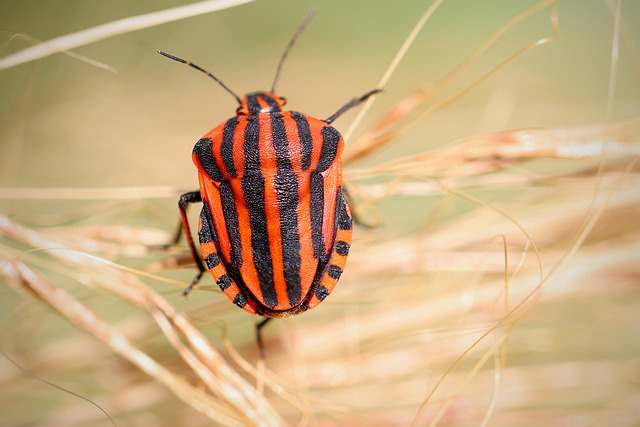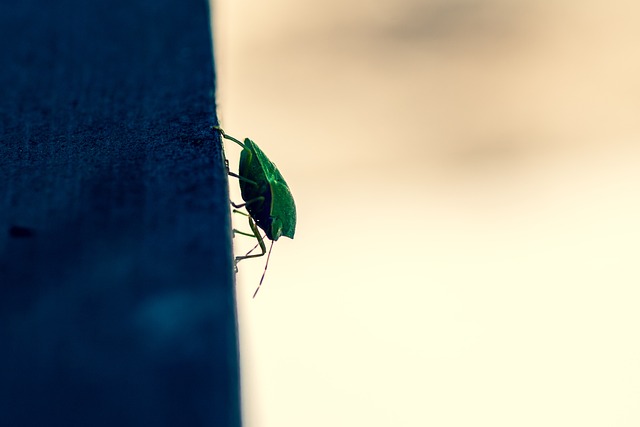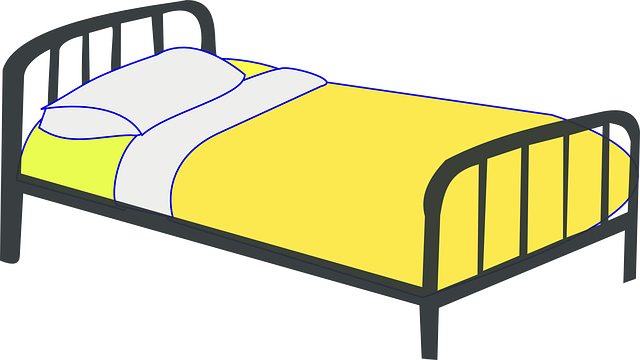Bed bug heat treatment is a specialized process using controlled temperatures (120°F-150°F) to eliminate bed bugs and their eggs, safe for humans and pets. This method effectively penetrates hidden areas where bed bugs hide. It involves thorough inspection, gradual temperature elevation with specialized equipment, and post-treatment confirmation. Heat treatment is swift, eco-friendly, and non-toxic, eliminating bugs at every stage without chemical pesticides or repeated applications. Key preparation includes identifying entry points, removing loose items, vacuuming, and evacuating during treatment to ensure safety. Despite not damaging all items, meticulous application can successfully eradicate bed bugs from all life stages. Post-treatment, maintaining a bug-free environment requires regular cleaning, sealing entry points, using bed bug-proof encasements, and inspecting for signs of reinfestation.
“Discover an effective and targeted approach to eradicating bed bugs with our comprehensive guide on bed bug heat treatment. This method offers a non-toxic, efficient solution for ridding your space of these persistent pests. From understanding the science behind heat elimination to demystifying common myths, we break down the process step by step. Learn how preparation, temperature control, and proper post-treatment strategies are key to success. Take control of your environment and say goodbye to bed bugs with this powerful, modern solution.”
Understanding Bed Bug Heat Treatment: The Basics

Bed bug heat treatment is a specialized process designed to eradicate bed bugs and their eggs using controlled temperatures. This method involves heating a space, typically a room or building, to levels that are harmful to bed bugs but safe for humans and pets. Heat treatment is considered one of the most effective ways to eliminate bed bug infestations because it penetrates crevices, furniture, and other hard-to-reach areas where these pests hide.
The process usually starts with a thorough inspection to identify all active bed bug populations and their hiding places. Then, specialized equipment is used to raise the temperature gradually to a level that will kill both adult bugs and their young. Professional technicians monitor the temperature closely to ensure it remains within safe boundaries for the structure and its occupants. Once the treatment is complete, a post-treatment inspection confirms the success of the process.
How Does Heat Kill Bed Bugs?

Bed bugs, despite their name, are not affected by heat in the way humans or animals are. They cannot regulate their body temperature internally, so they are particularly vulnerable to high temperatures. When exposed to heat, bed bugs dry out and shut down, ultimately leading to their demise. This is why bed bug heat treatment has become a popular and effective method for eliminating these pests from homes and other properties.
During a bed bug heat treatment, specialized equipment is used to raise the temperature in infested areas to levels that are fatal to bed bugs. Typically, this involves heating the air or surfaces to between 120°F and 150°F (49°C to 66°C). At these temperatures, bed bugs cannot survive, ensuring a thorough and lasting elimination of the infestation. This method is particularly useful for reaching crevices, cracks, and hard-to-access areas where bed bugs may hide.
Advantages of Using Heat for Bed Bug Elimination

Heat treatment is a highly effective and popular method for eliminating bed bugs, offering several significant advantages over other pest control approaches. One of the key benefits is its ability to reach and kill bed bugs at all stages of their life cycle—eggs, nymphs, and adults—in one comprehensive session. Unlike chemical pesticides that may require multiple applications and can leave residual risks, heat treatment provides a faster and more thorough solution.
This non-toxic method also ensures minimal environmental impact, making it a preferred choice for eco-conscious individuals and businesses. The targeted application of heat allows for the safe destruction of bed bugs without damaging personal belongings or structures, a common concern with traditional pest control methods. Moreover, heat treatment is known for its quick turnaround time, as it doesn’t leave behind any harmful chemicals that need to dissipate, ensuring a faster return to a bug-free environment.
Preparation Before Bed Bug Heat Treatment

Before undergoing a bed bug heat treatment, thorough preparation is essential for effective and safe results. This includes identifying and sealing all entry points and cracks where bed bugs could be hiding or entering from. Remove all loose items like furniture, curtains, and clothing from the affected areas to ensure complete access for the heat treatment process. Additionally, vacuum thoroughly to remove any debris, eggs, or bed bug remnants that might interfere with the treatment.
It’s crucial to communicate with your chosen pest control service about any medications, pets, or plants in the vicinity of the treatment area. Certain heat levels could potentially damage medication or harm pets and plants, so adjustments may be necessary. Ensure all individuals vacate the premises during the treatment process to maintain safety, as high temperatures can be dangerous if not managed properly.
The Process: Step-by-Step Guide to Heat Treatment

Bed bug heat treatment is a comprehensive process designed to eliminate even the most stubborn bed bug infestations. It involves carefully controlled heating to raise the temperature in affected areas above levels that are harmful to the bugs, their eggs, and any stages of their life cycle. This method is particularly effective for hard-to-reach corners and crevices where traditional treatments might struggle.
The process begins with a thorough inspection to identify all active bed bug locations and potential entry points. Once identified, specialized equipment is used to evenly distribute heat throughout the infested zones. Temperatures are monitored closely to ensure they reach and maintain levels that are safe for humans and pets but devastating to bed bugs. After the heating period, a final inspection confirms the successful elimination of these pests, providing residents with a bug-free sleeping environment.
Common Myths and Misconceptions About Bed Bug Heat Treatment

Many people struggling with bed bugs often turn to heat treatment as a solution, but there are several common myths and misconceptions surrounding this method. One such myth is that heat treatment is the fastest way to eliminate bed bugs, which isn’t entirely true. While it’s an effective method, the process involves careful planning and execution to ensure all stages of the bug life cycle are targeted. Extreme heat can kill bed bugs, but it must be applied consistently and at specific temperatures to be successful, often requiring professional equipment and expertise.
Another misconception is that heat treatment is non-invasive and causes no damage to personal belongings. While it’s true that heat can effectively kill bed bugs, the process does involve raising the temperature of infested areas and items, which can lead to damage if not managed properly. Certain materials are more sensitive to heat, and items like electronics or fabrics may be at risk. Professional services take precautions to protect these items, but it’s essential to understand that some level of care and preparation is needed before and after treatment to preserve possessions.
Prevention Strategies After Heat Treatment

After successfully undergoing a bed bug heat treatment, implementing effective prevention strategies is key to maintaining a bed bug-free environment. One of the primary measures is regular cleaning and maintenance. Vacuuming frequently with a HEPA filter can help trap any remaining bed bugs or eggs. Washing bedding, curtains, and other washable items in hot water (above 50°C) for at least 60 minutes ensures that any surviving pests are eliminated.
Sealing entry points and cracks around the home is another vital step. Bed bugs can enter through small openings, so sealing these areas with caulk or similar materials prevents them from returning. Additionally, using bed bug-proof mattress encasements creates a physical barrier between you and potential pests, offering an extra layer of protection against reinfestation. Regularly inspecting furniture, floors, and walls for any signs of bed bugs also plays a crucial role in early detection and prevention.
